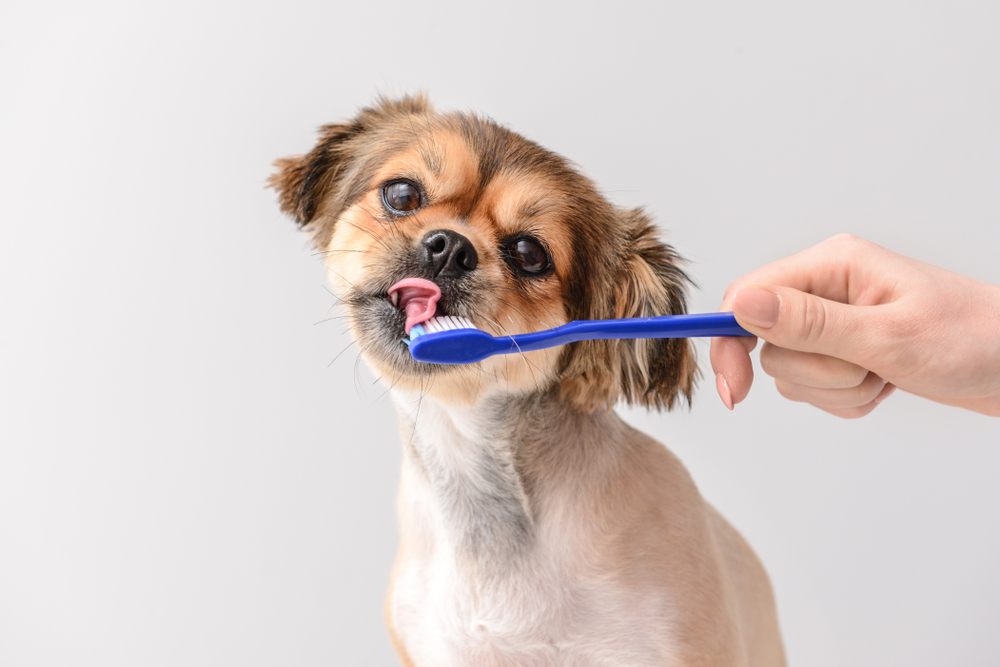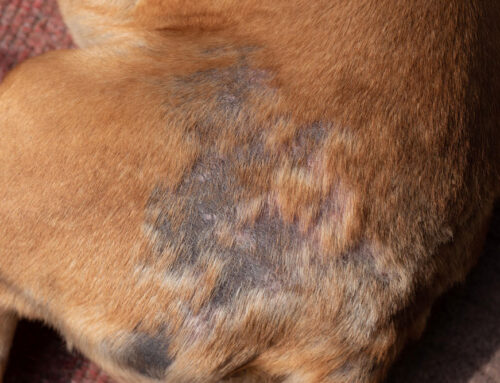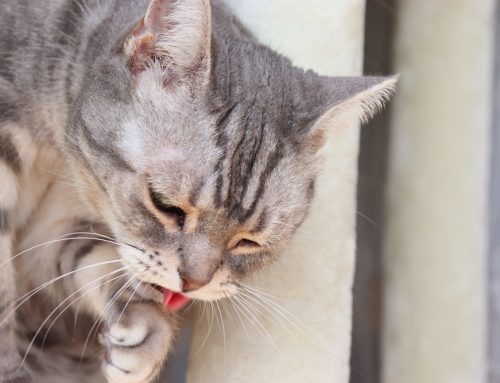February is our favorite month, but not because we celebrate our love for our pets on Valentine’s day. February is also National Pet Dental Health Month—a month dedicated to educating pet owners about the importance of maintaining their pets’ oral health. While you may think your pet’s dental health is up to par—after all, they eat well and have only mildly stinky breath—you may be surprised to learn that things behind their cute little whiskers are likely not as good as they seem. Review these five surprising dental facts from our Tidmore Veterinary Hospital team, and see how your pet’s dental health stacks up.
#1: Your pet’s bad breath is not normal
While you would not expect your pet to have minty fresh breath, bad doggy or tuna breath is not normal. In fact, bad breath is one of the earliest, most common dental disease signs in pets. Other signs your pet may have dental disease include:
- Brown or yellow tartar accumulation on their teeth
- Red, inflamed gums
- Broken or loose teeth
- Decreased appetite
- Swallowing food whole, instead of chewing
- Blood in their water bowl or on their toys
- Shying away from being touched near their face
- Unexplained grumpiness
If you recognize these signs in your pet, schedule a dental evaluation with our team to assess their dental health, and address any problems.
#2: Your pet older than 3 years likely already has dental disease
According to the American Veterinary Medical Association, periodontal disease is the most common dental condition in dogs and cats, and will likely begin by 3 years of age, unless effective preventive care is initiated. Without treatment, periodontal disease will lead to loose teeth, infection, and significant pain in your pet.
To prevent periodontal disease from attacking your pet’s teeth, begin a regular oral health program when they are young. An effective program includes annual dental evaluations, full-mouth dental X-rays, regular cleanings, and daily toothbrushing. If your pet already has dental disease signs, our Tidmore Animal Hospital team will begin with a dental evaluation, dental X-rays, and a professional cleaning to address any current issues, and then you can begin daily toothbrushing at home to prevent further problems.
#3: Dental disease affects more than your pet’s teeth
Dental disease is caused by oral bacteria that continuously deposit a sticky film called plaque on your pet’s teeth. Plaque mineralizes to hard, bacteria-laden tartar in 24 hours unless regularly brushed off the tooth surfaces. As if that’s not gross enough, dental disease can extend beyond your pet’s mouth, if bacteria from this nasty build-up leaks into your pet’s bloodstream and attacks their kidneys, heart, and other organs.
Dental disease can also lead to tooth root infections, with the large, three-rooted carnassial teeth on the upper jaw most commonly involved. Since these teeth are rooted in the maxillary bone below your pet’s eyes, tooth root abscesses often cause a pus-filled swelling below the eye that may be confused with an eye or facial problem.
#4: Your pet may be hiding dental pain
As plaque and tartar accumulate on your pet’s teeth, oral bacteria also delve below the gum line and attack the periodontal ligaments that anchor the teeth in their bony sockets. Periodontal inflammation and infection eventually lead to ligament breakdown, and the affected tooth roots become infected and loose. Periodontal disease can cause significant dental pain in pets, who often hide the fact they are painful. Your pet may not hide pain to avoid a veterinary visit, like a child who is afraid of visiting their physician, but ingrained behaviors often lead pets to act normally, despite pain. Your pet’s dental pain may also begin as mild discomfort and progress to more severe pain, allowing them to gradually compensate by no longer chewing their food, or avoiding being petted near their head.
#5: Your pet will likely love toothbrushing

Daily toothbrushing may sound unmanageable, but most pets accept it surprisingly well. Your pet is likely to enjoy toothbrushing sessions if you start slowly, progress gradually at a comfortable pace, and reward them with a treat each time. Here are some tips to get you started:
- Choose a small child’s toothbrush or finger brush, and veterinary-approved toothpaste.
- Never use human toothpaste, which contains fluoride that is unsafe for pets if swallowed.
- Begin by allowing your pet to lick the flavored toothpaste from your finger, and rewarding them with a treat.
- Rub your finger over your pet’s outer tooth surfaces, then repeat with the toothbrush.
- Focus on the outer surfaces only—your pet’s tongue will take care of the inner surfaces.
- Praise your pet and reward them with a special treat, game, or activity after each session so they form positive associations with toothbrushing.
- Supplement daily toothbrushing with Veterinary Oral Health Council-approved products, such as water additives, dental wipes, treats, and foods, that are proven to slow plaque and tartar accumulation.
This February, focus on your pet’s dental health by scheduling a dental evaluation or professional cleaning with our Tidmore Veterinary Hospital team. Your pet will thank you with a sparkling smile and minty-fresh kisses.








Leave A Comment